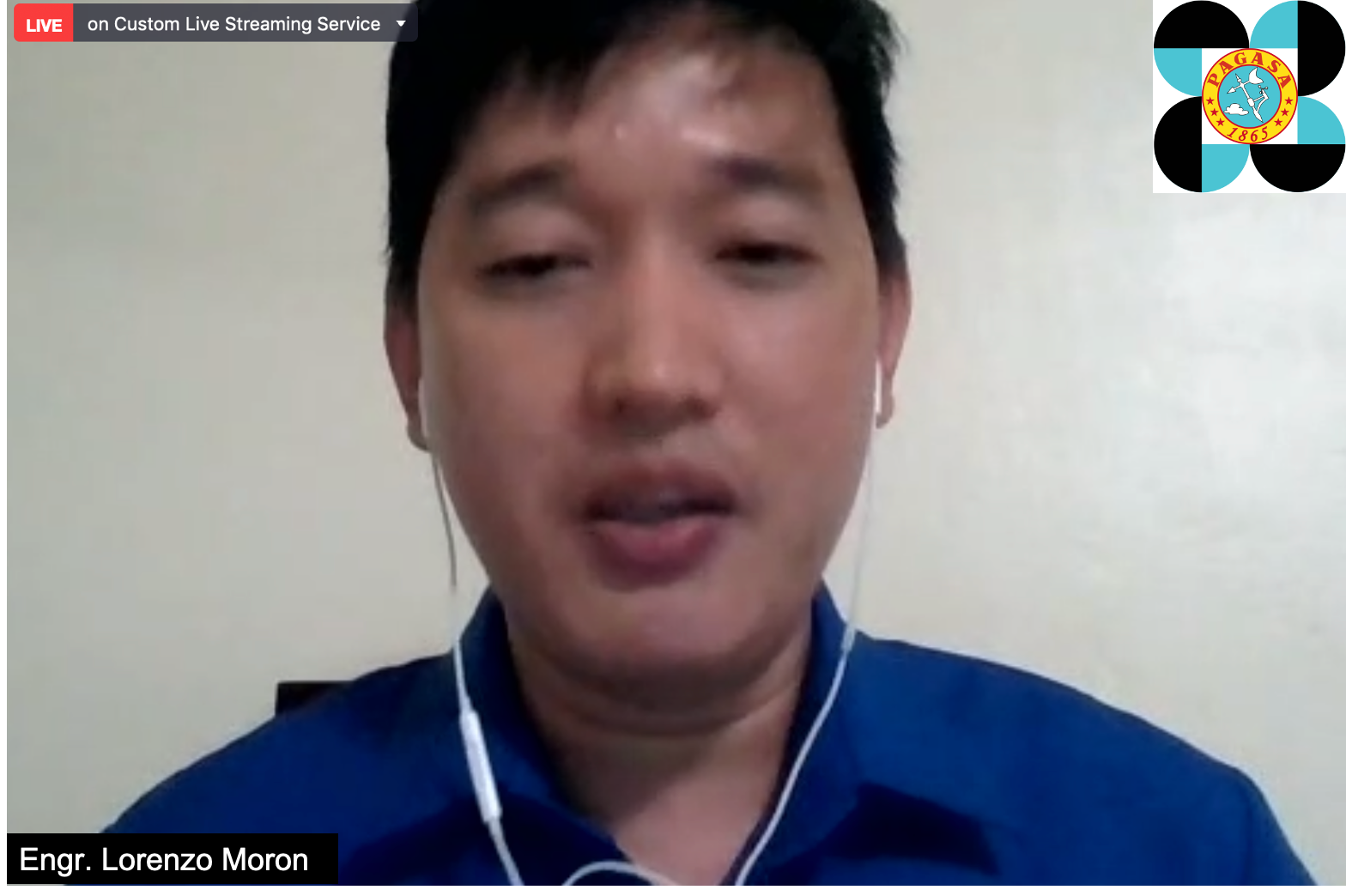
The Philippine Atmospheric, Geophysical and Astronomical Services Administration-Department of Science and Technology (PAGASA-DOST) continues to improve its weather monitoring and predictions by assessing the UM Global and Regional models in comparison with the observations from the Global Precipitation Measurement.
This was discussed during a lecture under the Living Dangerous Webinar Series last August 6, 2020, organized by the Continuing Education and Training (CET) Division of the School of Environmental Science and Management-University of the Philippines Los Baños (SESAM-UPLB).
The comparison of the models was discussed by Engr. Lorenzo A. Moron, Weather Specialist II, Research, Development and Training Division, PAGASA-DOST. In his presentation entitled “High Impact Weather Case: Typhoon Yutu (Rosita)”, his study provided a substantial scientific analysis on the concentration of precipitation during the passage of the said tropical cyclone, as well as the assessment of the different models.
A graduate of the Master of Science in Atmospheric Environment at Hankuk University of Foreign Studies, South Korea, Engr. Moron illustrated the different radar observations and model evaluations gathered from the data during the onset of Typhoon Rosita (International name: Yutu). This tropical cyclone ravaged northern Luzon, particularly Benguet Province in October 30, 2020.
According to Engr. Moron, the Global Scale Model has good timing and spatial location of precipitation, although in some cases, it tends to overestimate especially on the latter part of the model runs. It was also observed that the model underestimates the concentration of precipitation during the initial landfall of a tropical cyclone, since it tends to slow down. Also observed during Typhoon Rosita were the possible overdoing of enhanced precipitation due to orography, as well as overestimation of the offshore precipitations in the latter model runs.
On the other hand, the Regional (Convective) Scale Model, tends to overestimate precipitations especially in the latter model runs. It also fairly captures intensity and location of precipitation. However, it tends to overestimate inland rainfall penetrations. It was also observed that it produced wider band of rainfall and tends to overestimate offshore precipitations in the latter model runs.
Engr. Moron said PAGASA plans to run more models at different lead times for weather predictions on both global and regional scale. “This will be undertaken once we acquire a new supercomputer system for PAGASA and we hope to install it after this pandemic”, Engr. Moron said. Moreover, he mentioned that more case studies and model evaluations will be carried out to assess the performance of both global and regional scale models at different lead times. “This will provide more substantial assessment on the models’ strengths and weaknesses and refine the models for better weather predictions” he added.
This webinar was supported by the Information Technology Center of UPLB. More than 70 local and foreign participants from the academe, national and international agencies attended the webinar via Zoom platform.

